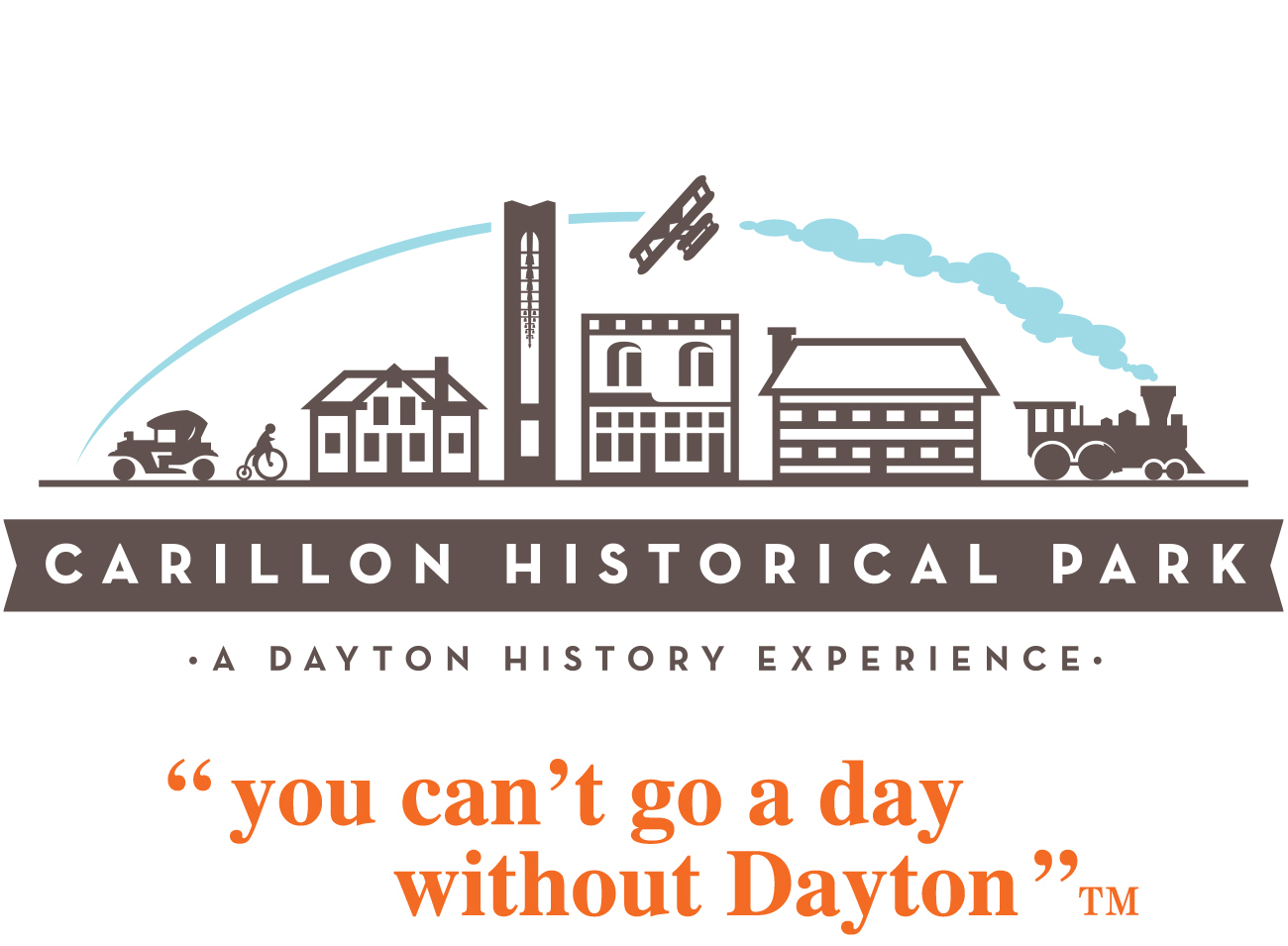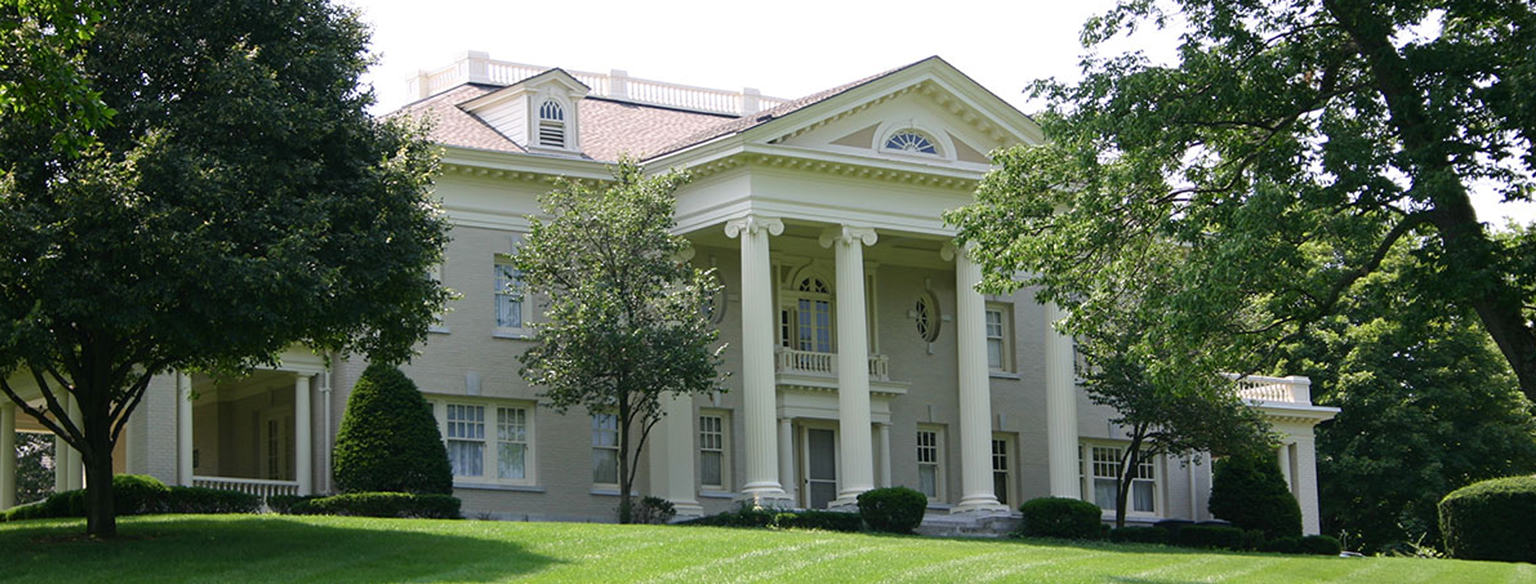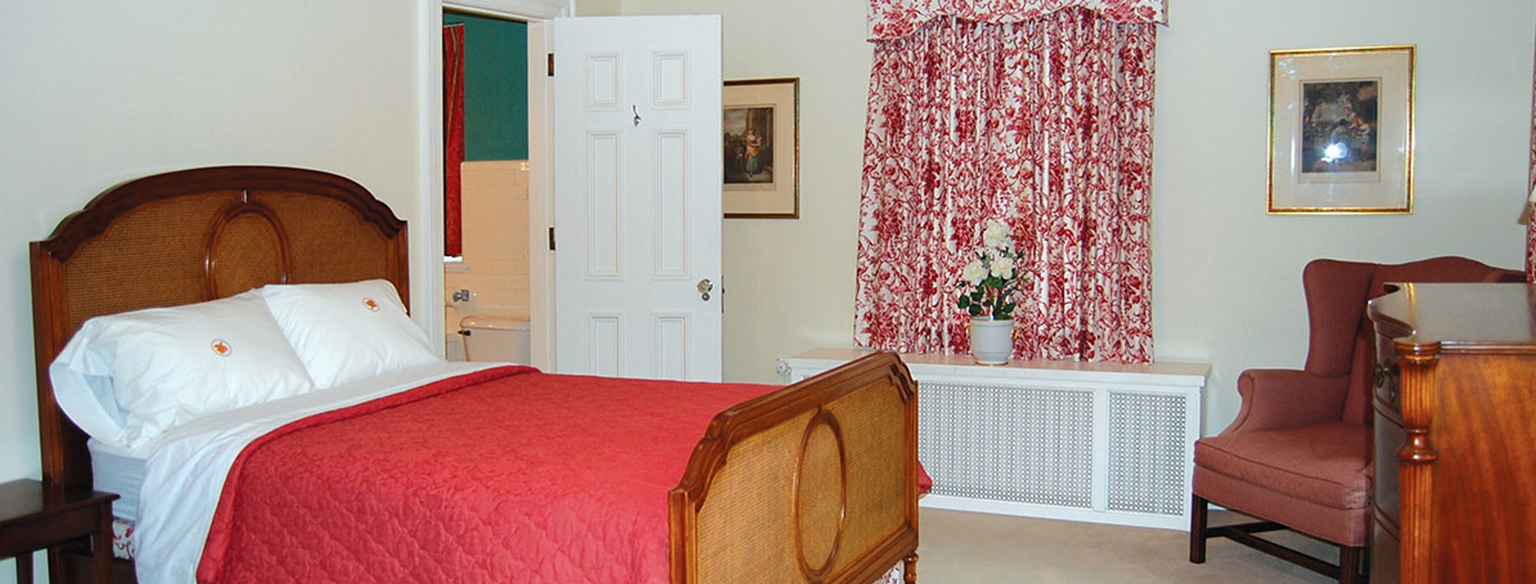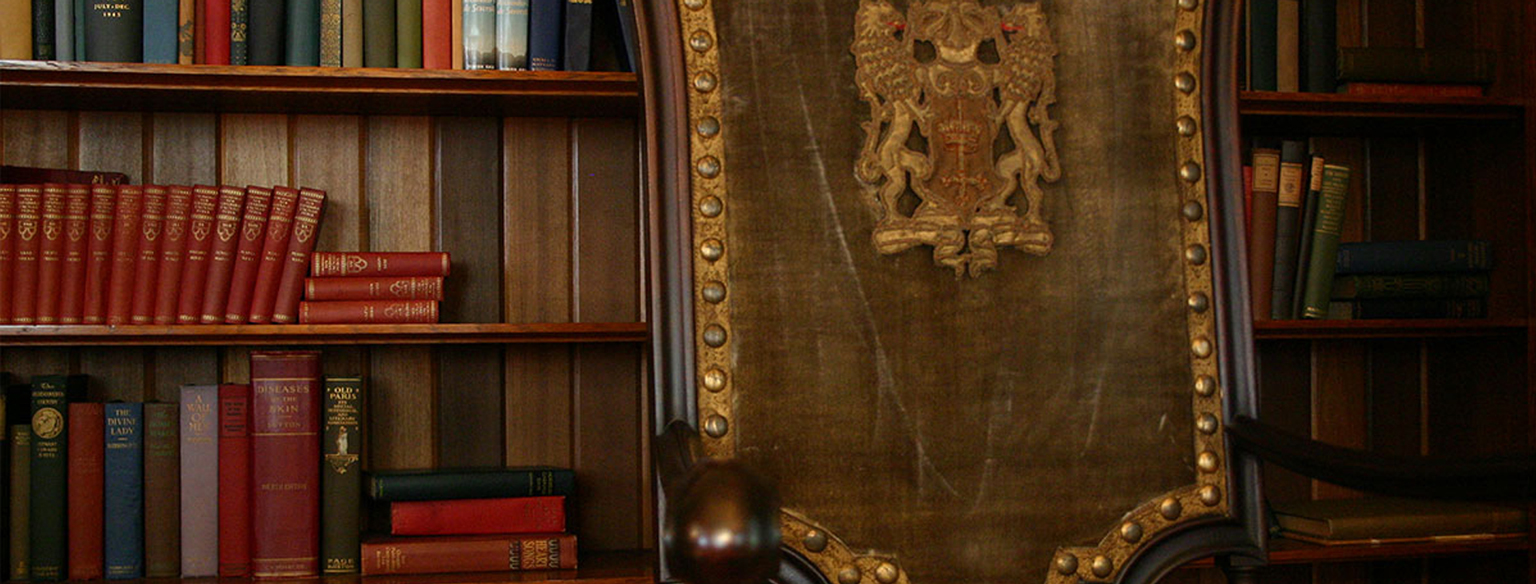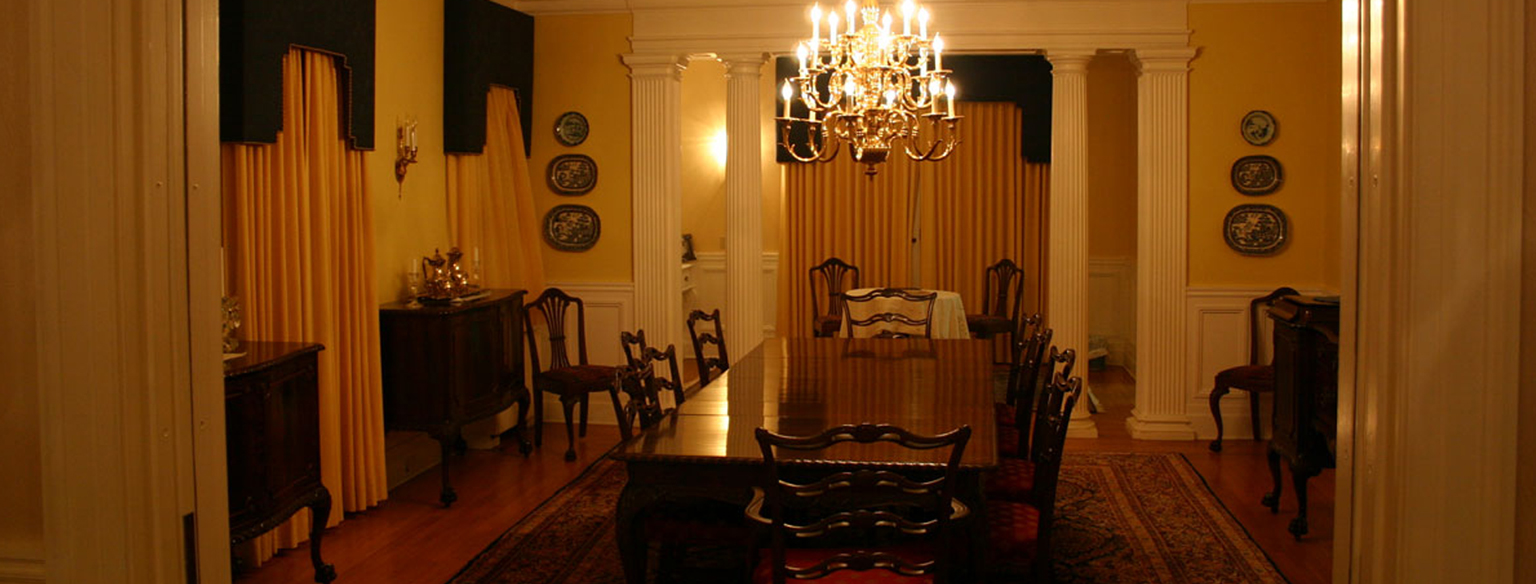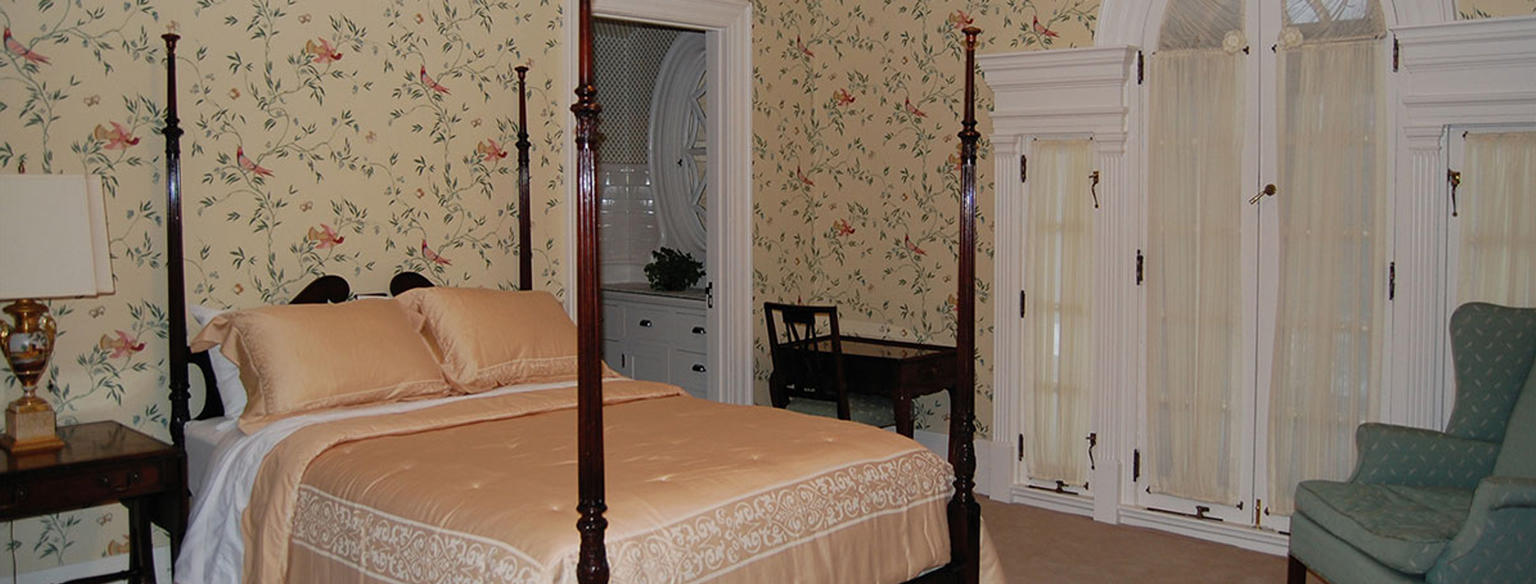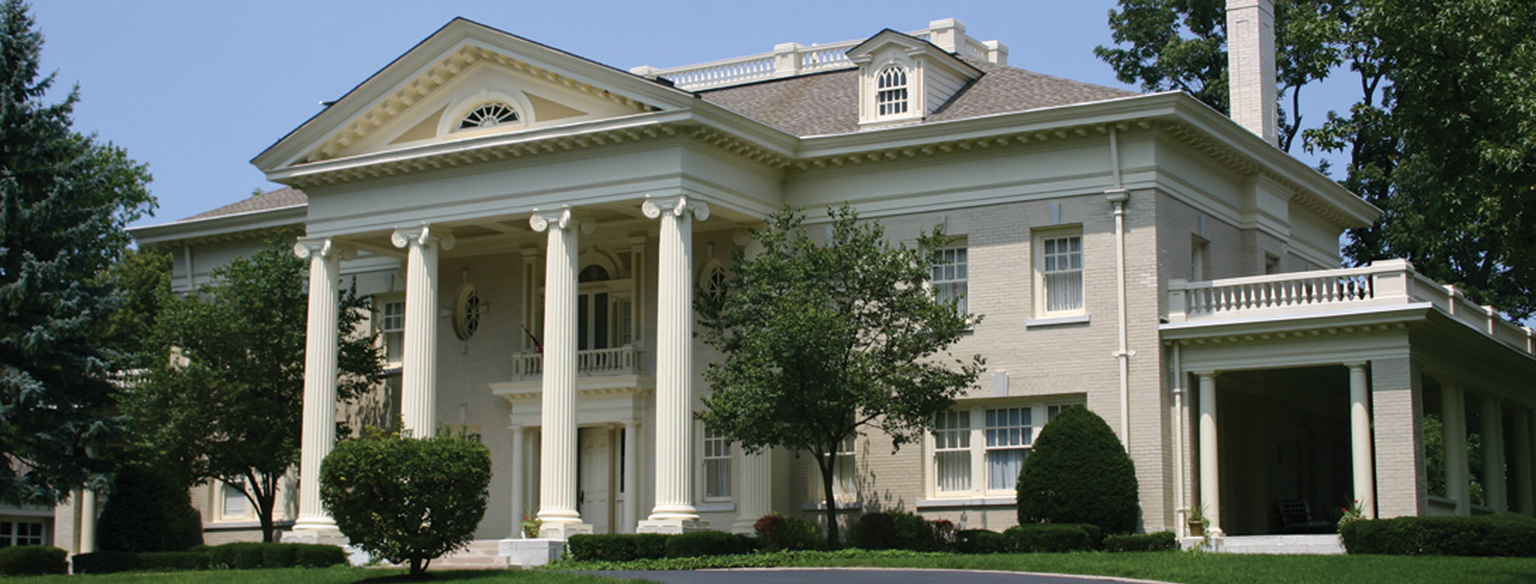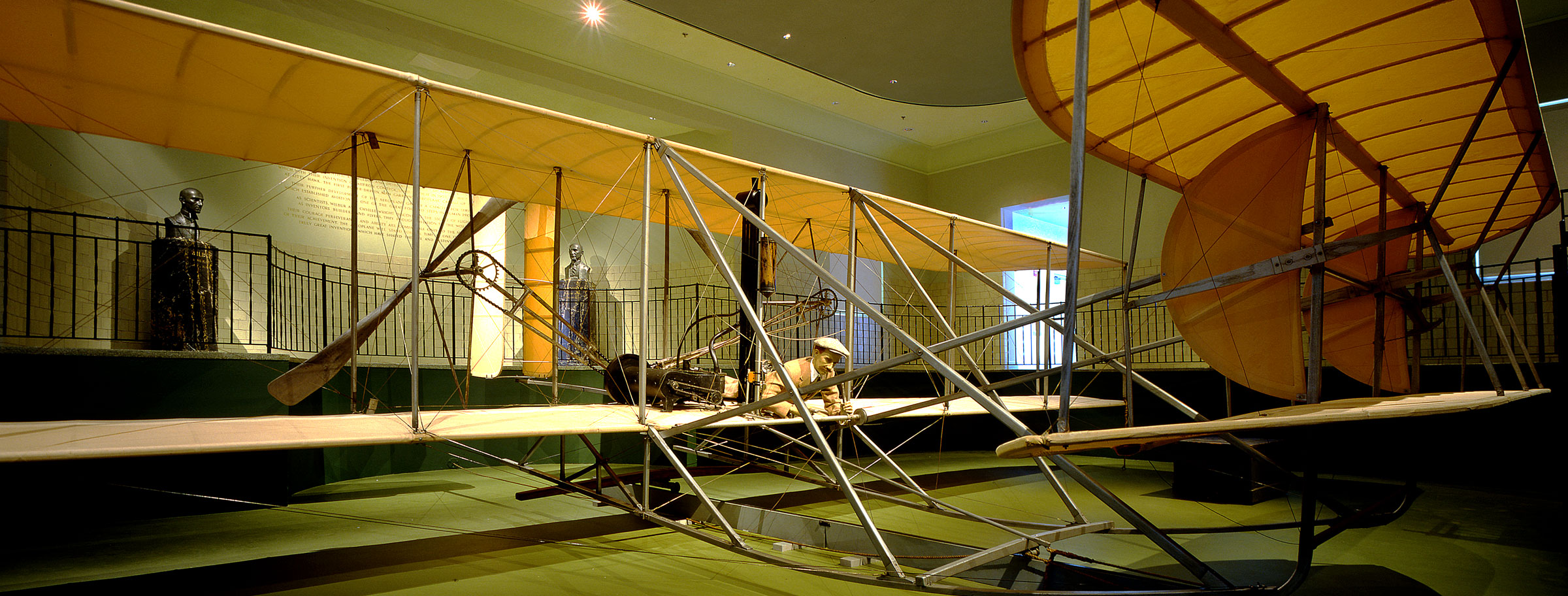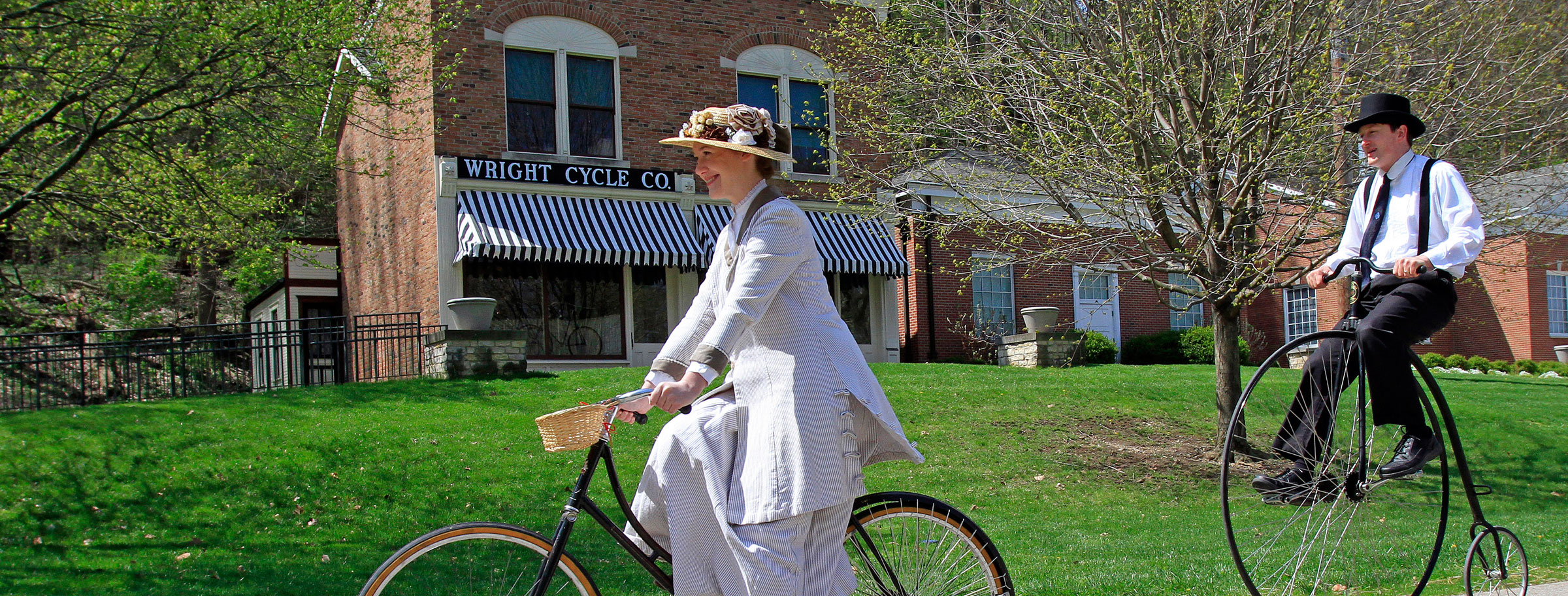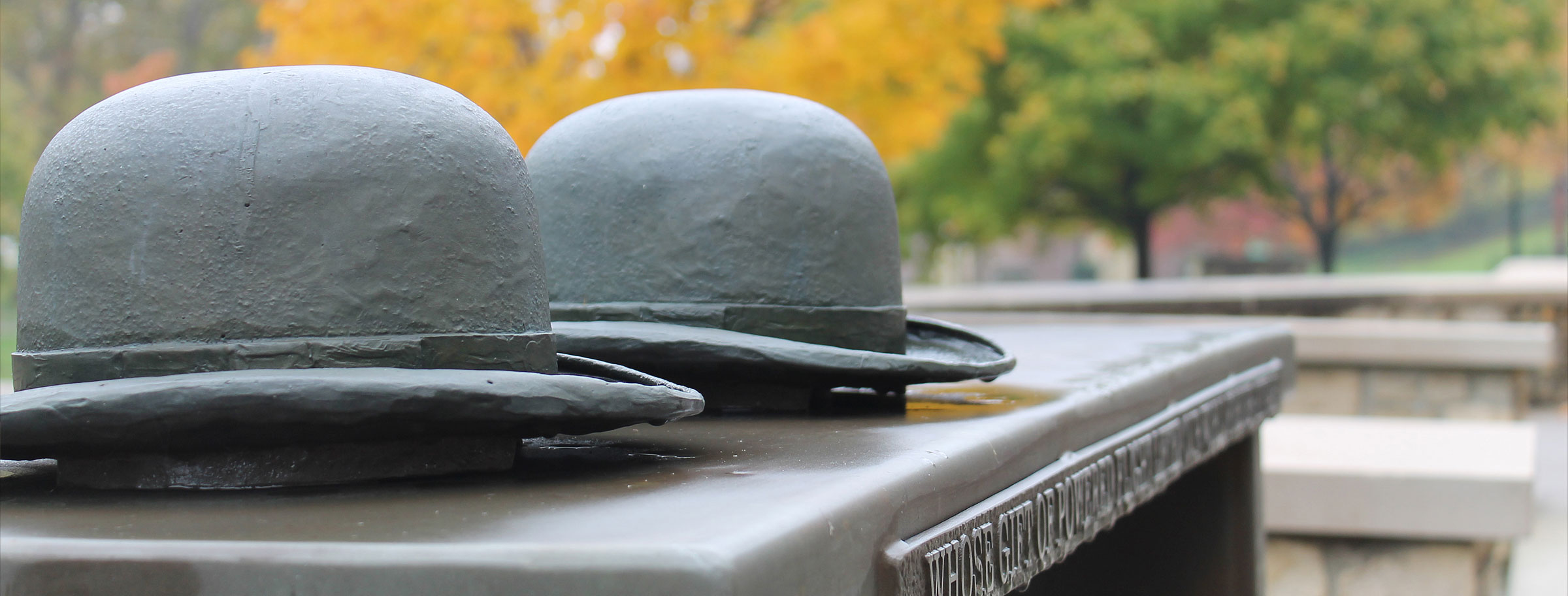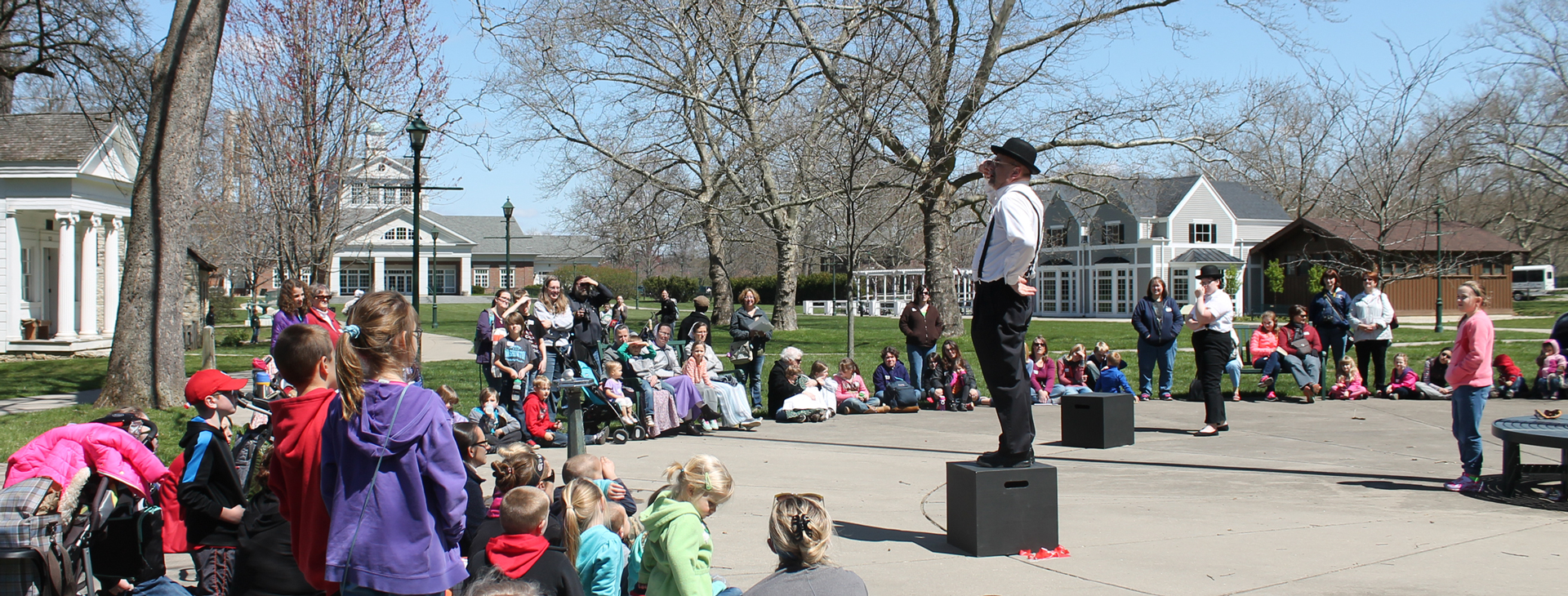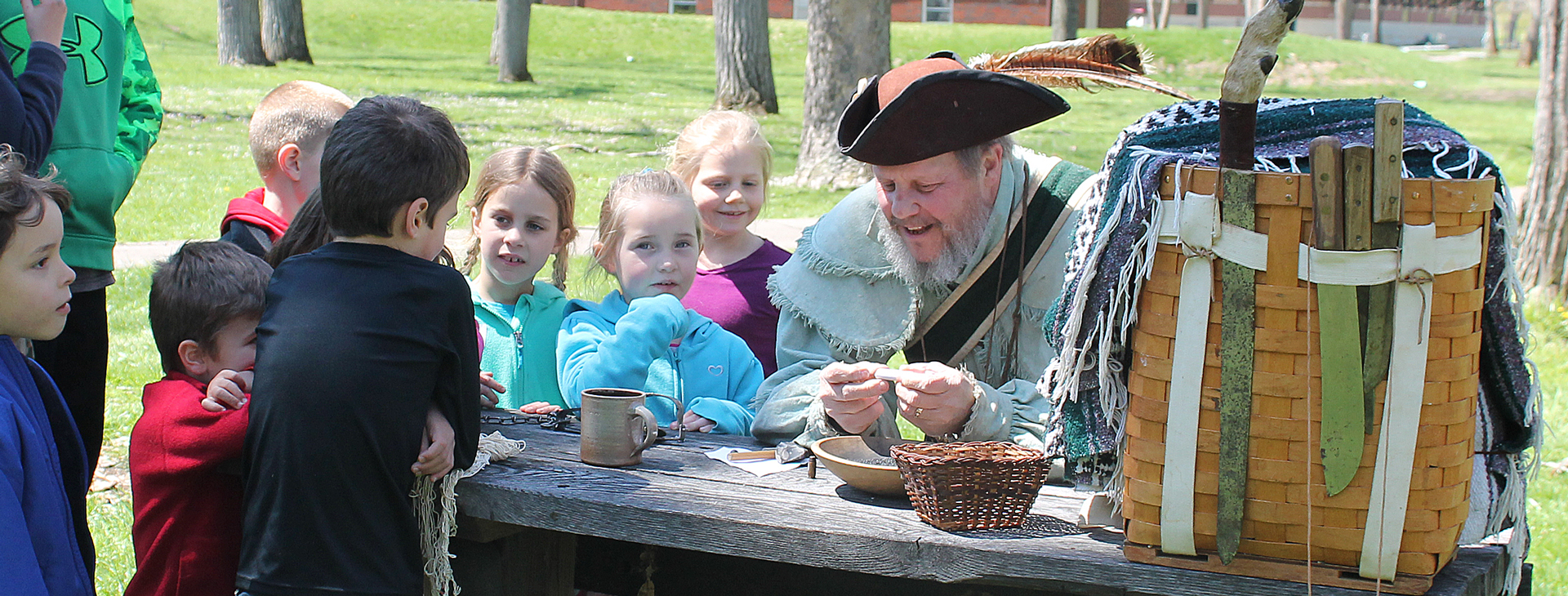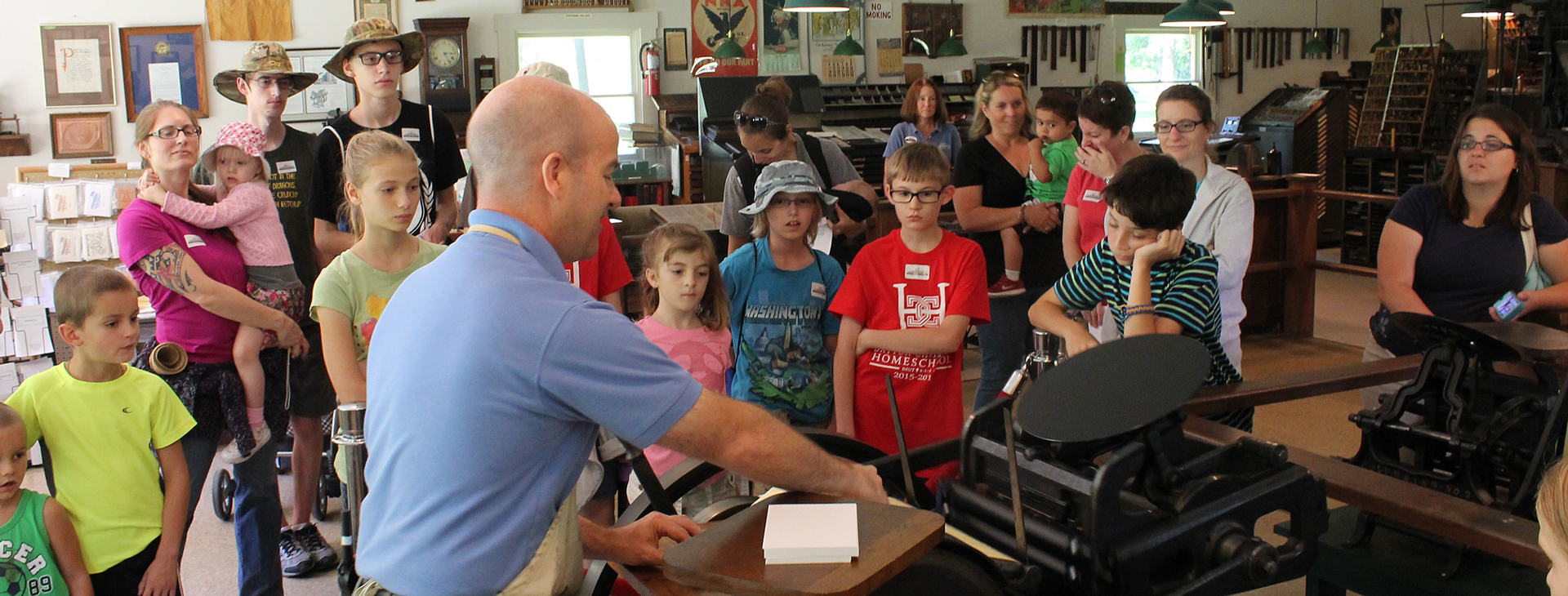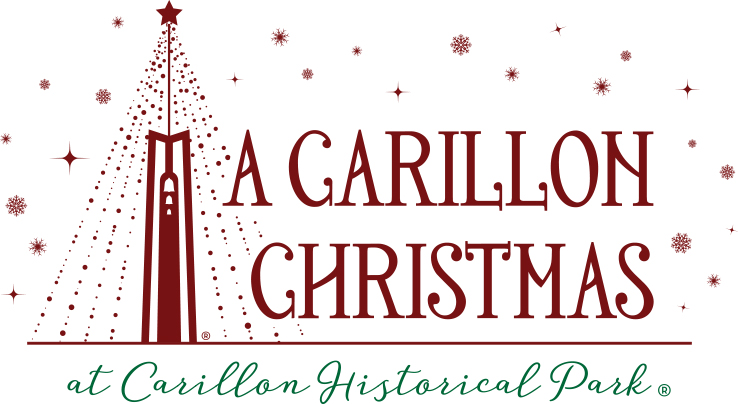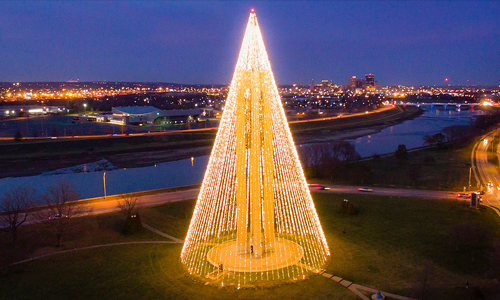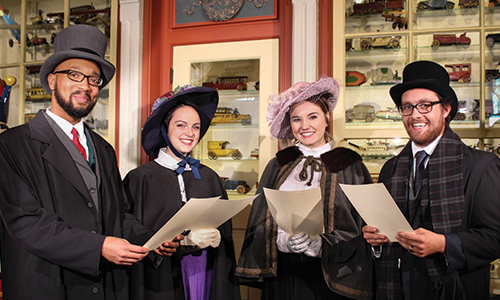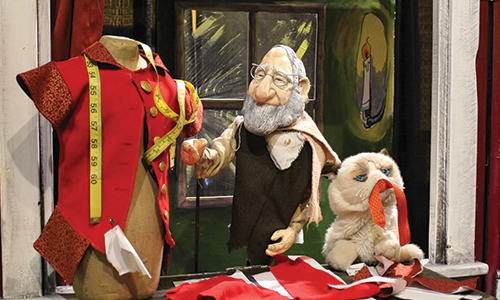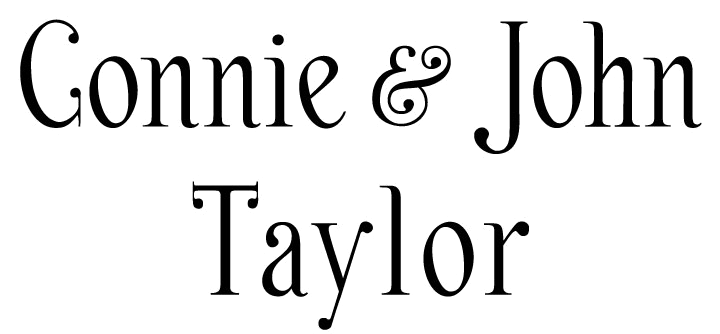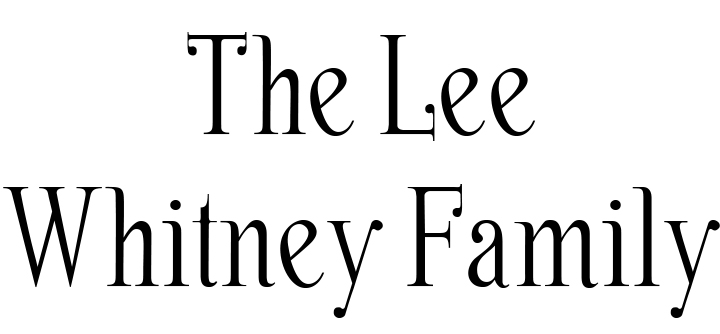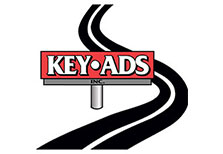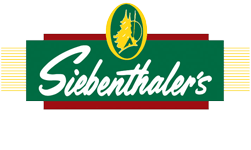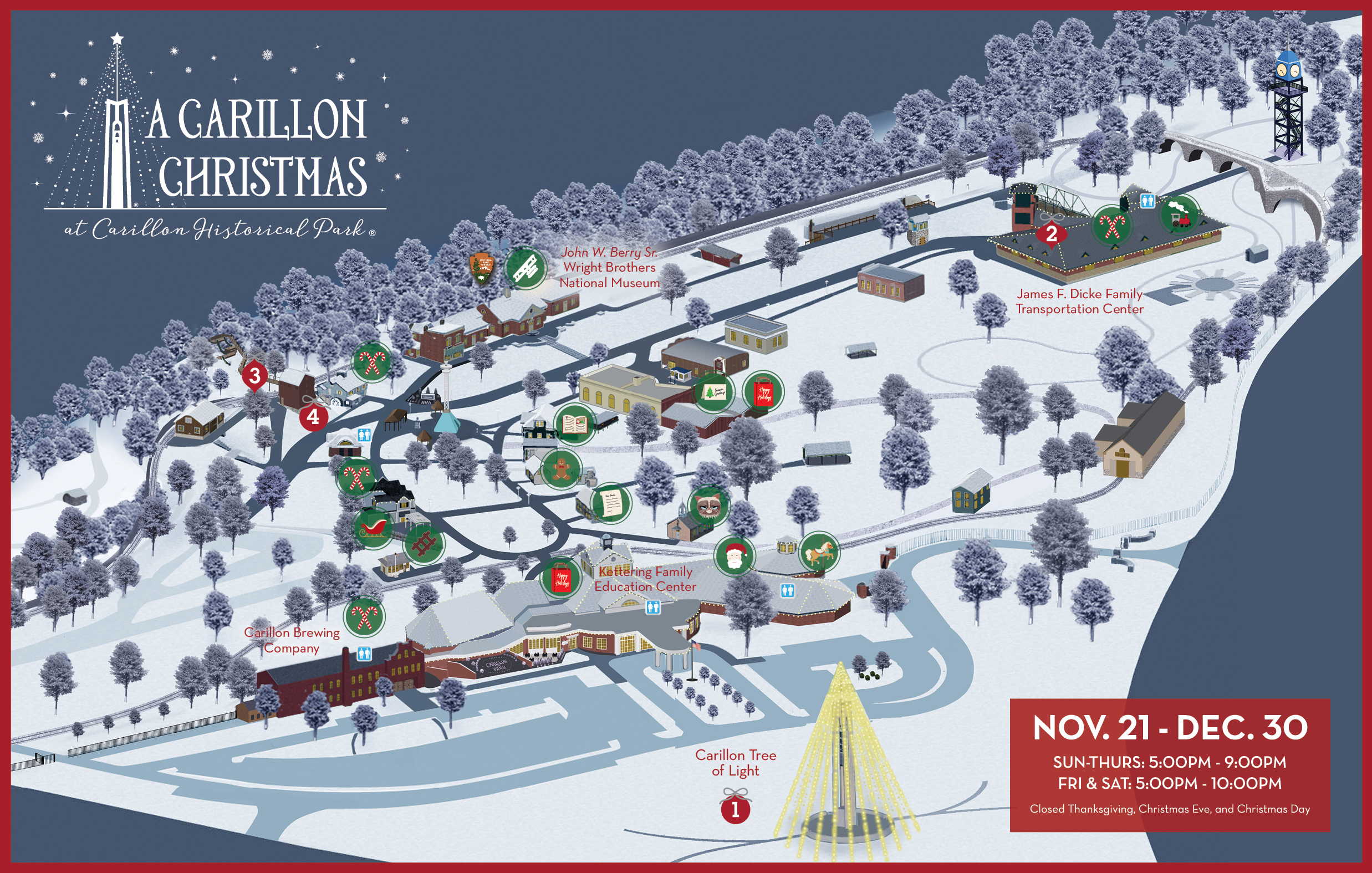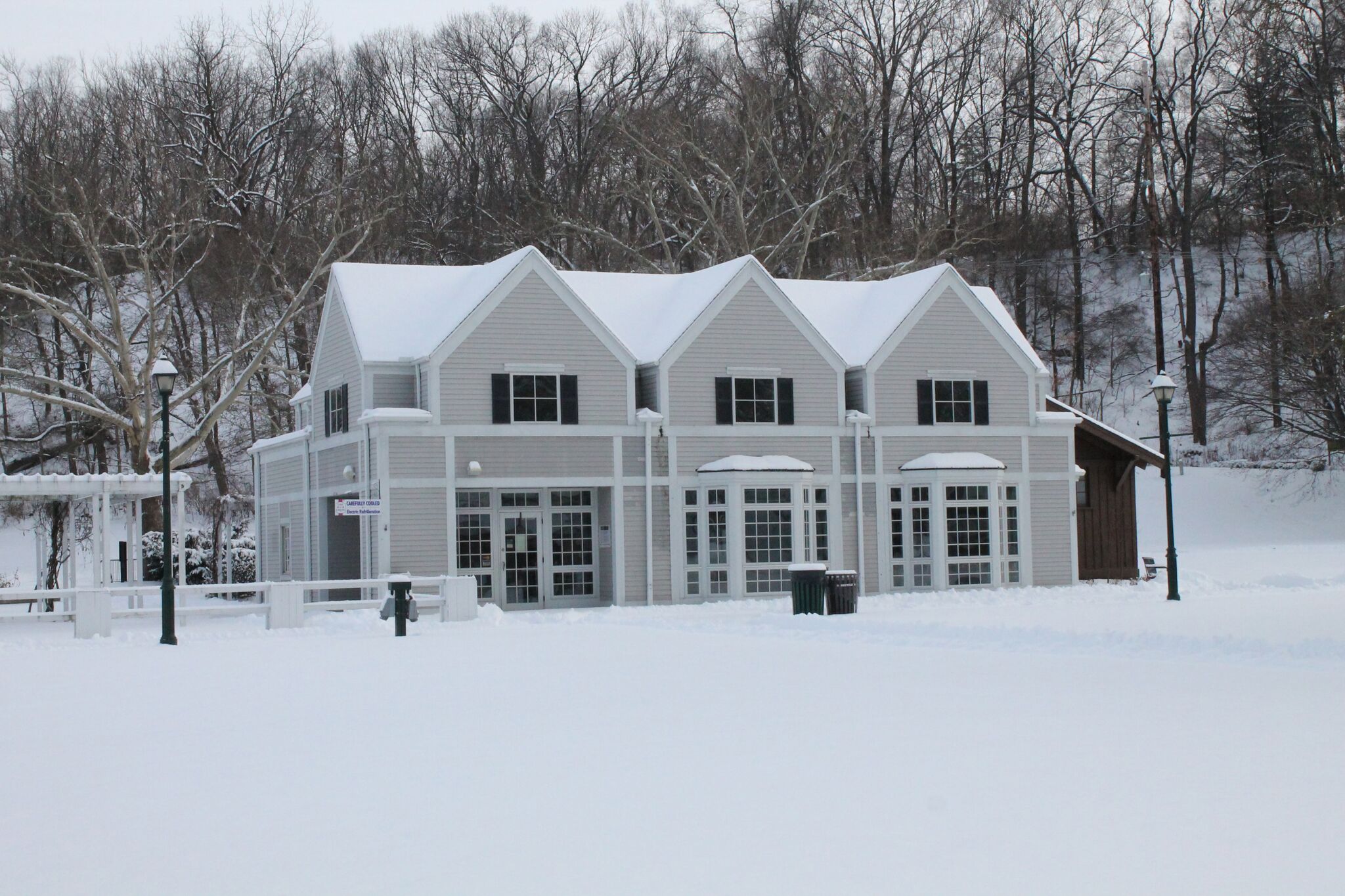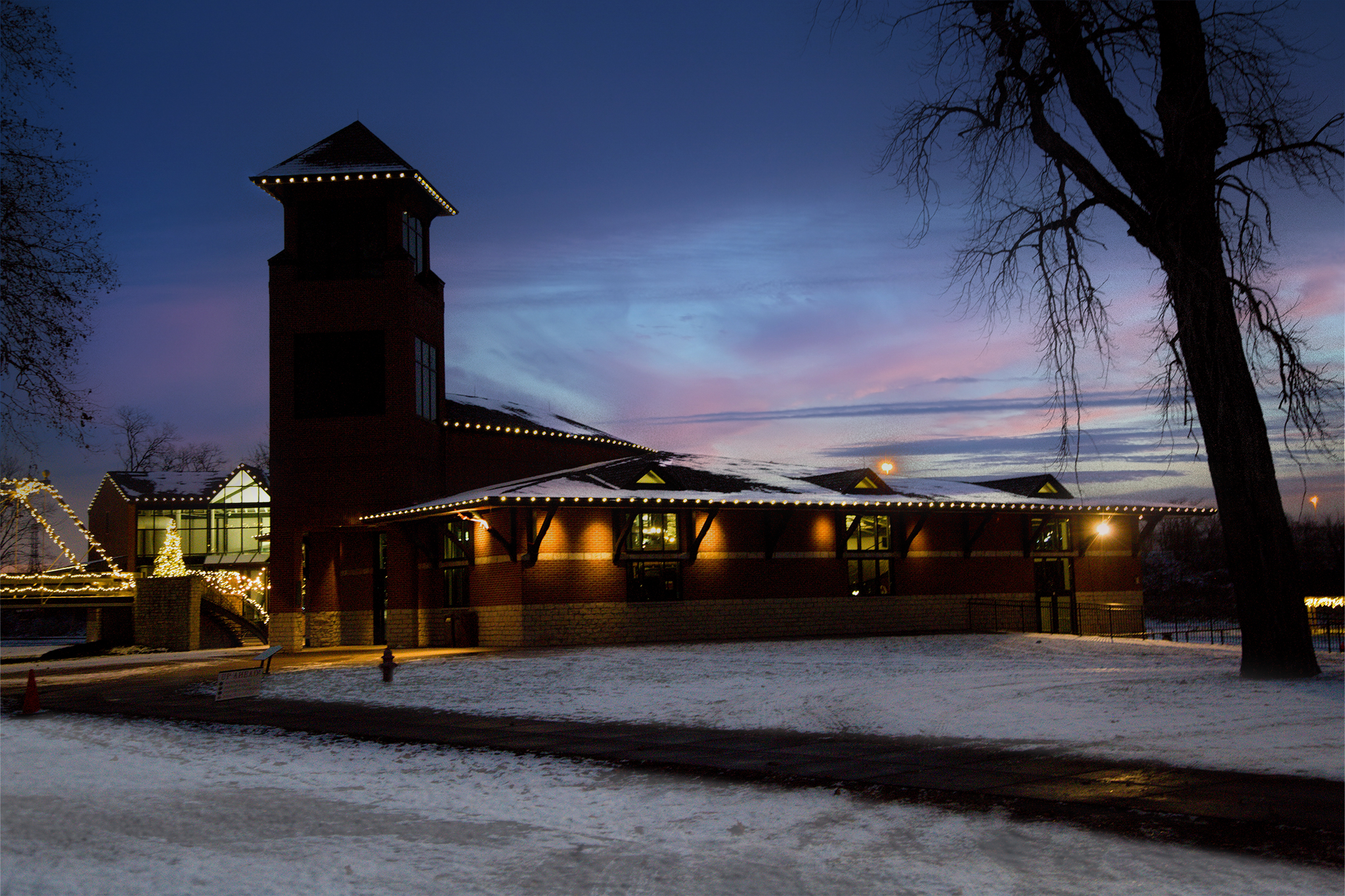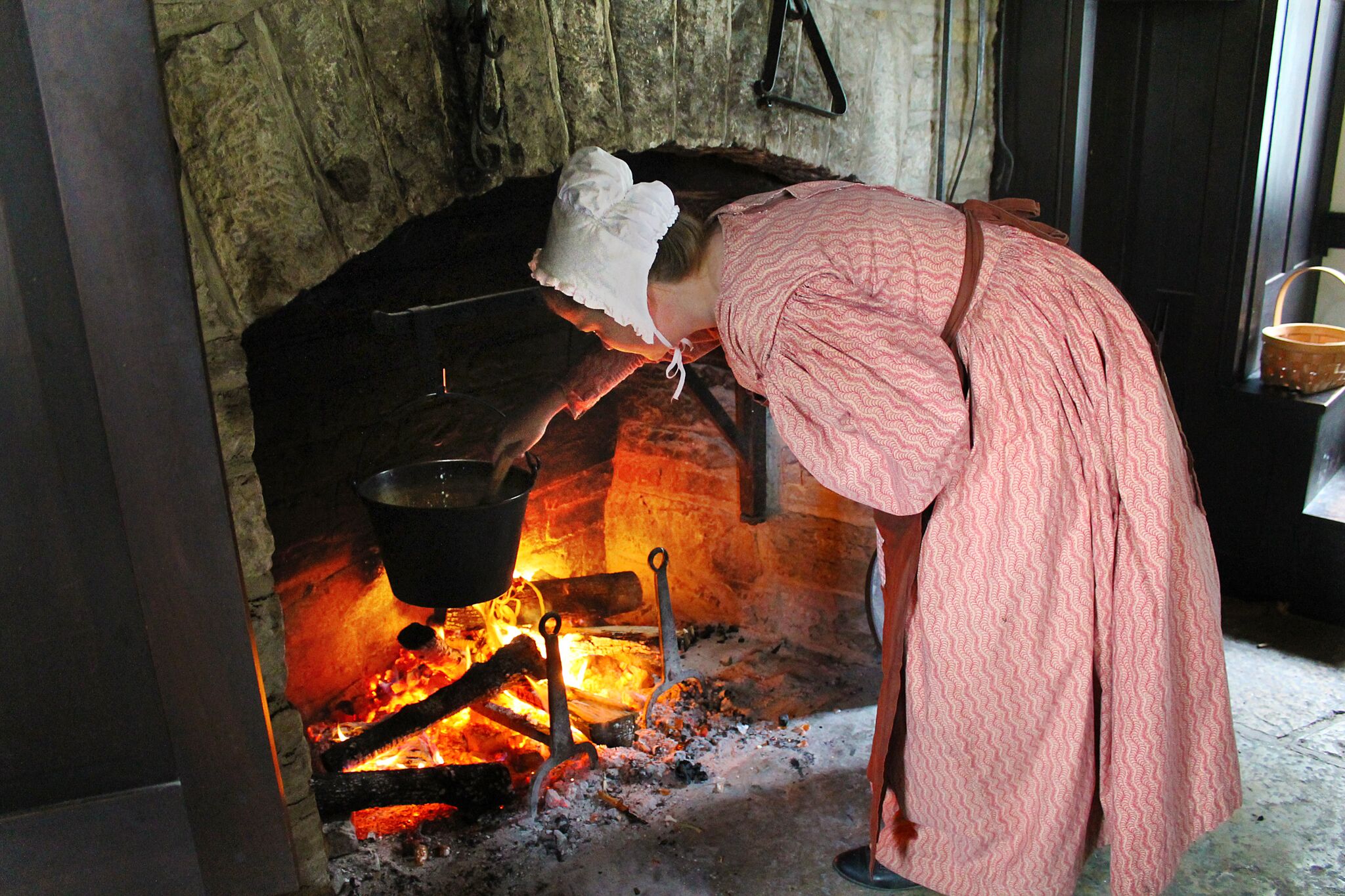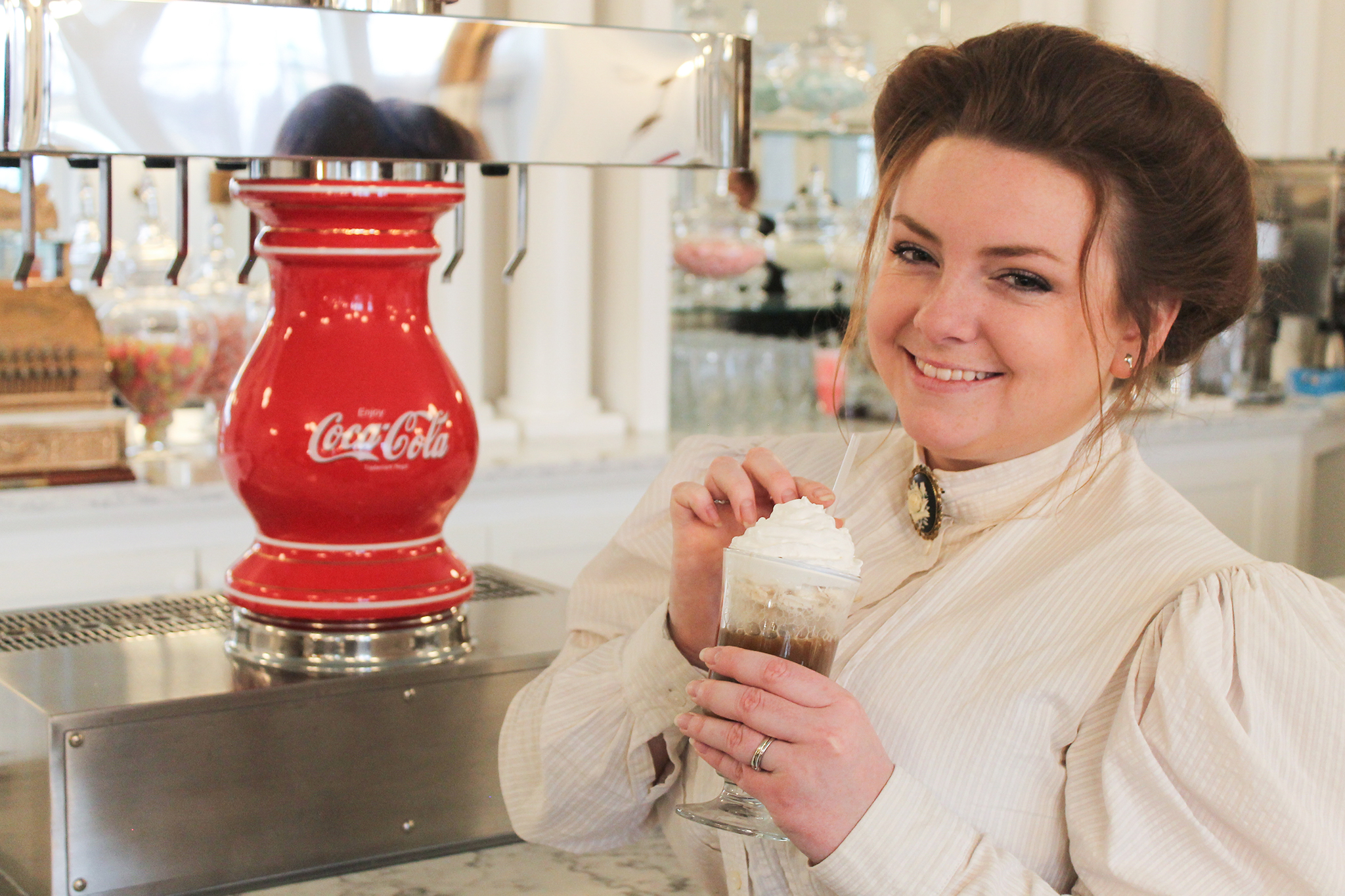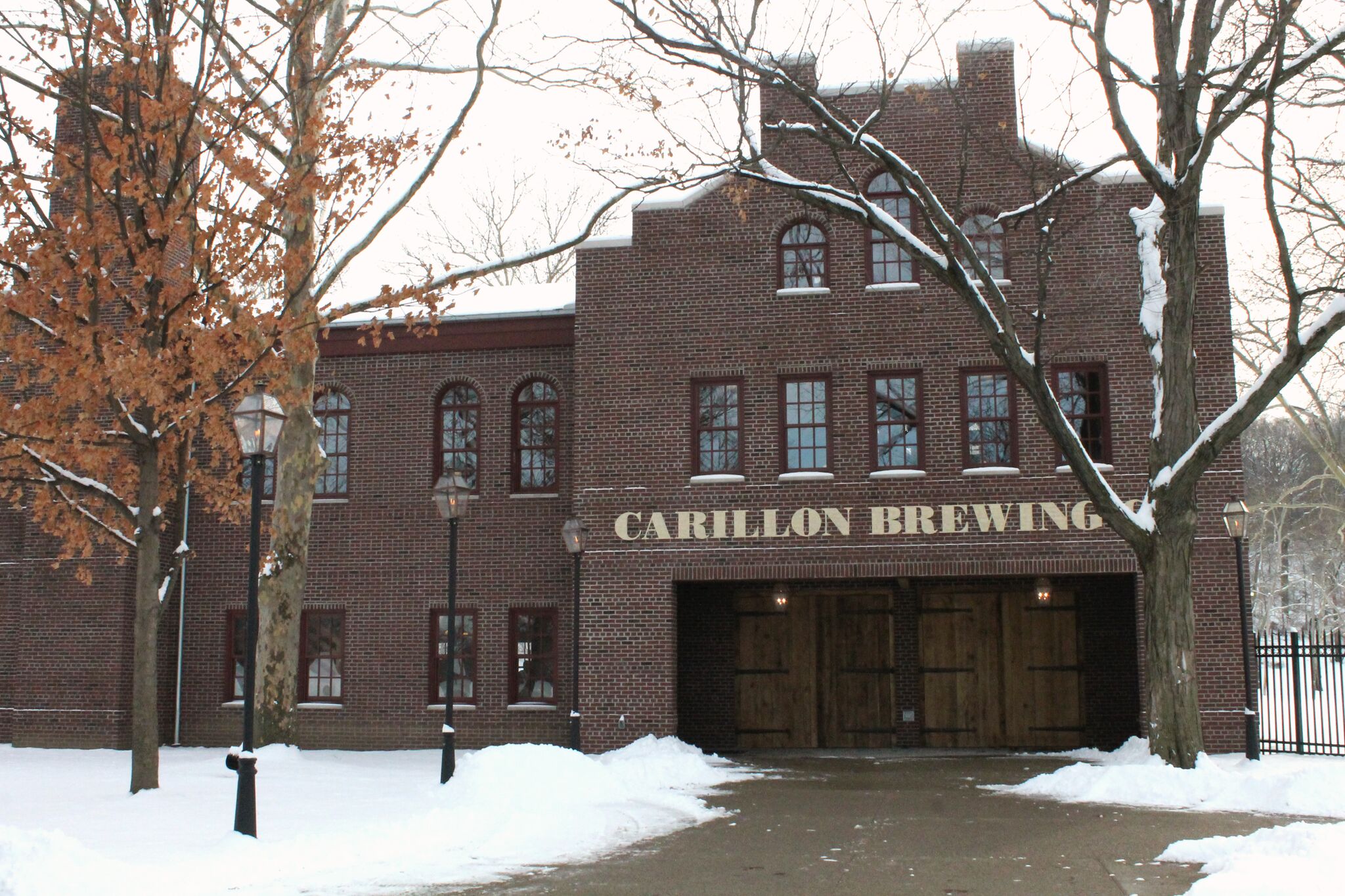History Trivia

This Week’s Question
How many Wright brothers were there?
There were four Wright brothers that lived to adulthood: Reuchlin (born 1861), Lorin (born 1862), Wilbur (born 1867), and Orville (born 1871). Two Wright twins, Otis and Ida, died shortly after birth in 1870. Katharine, the youngest Wright child and only daughter to live to adulthood, was born in 1874. Orville and Katharine share the same birthday – August 19 – three years apart.
Previous Questions
MLK received an honorary degree from which area university?
Martin Luther King, Jr. visited Dayton several times. In 1958, Dr. King received an honorary degree from Central State University. “It’s a great time to be alive,” he told 172 CSU graduates at the 1958 commencement. “You are graduating at the time of the dying of an old world and the birth of a new one.”
Where was Annie Oakley from?
Annie Oakley was born Phoebe Ann Moses on August 13, 1860, in nearby Darke County. She gained international stardom when she joined Buffalo Bill Cody’s Wild West show in 1885. She performed with the show for most of the next 17 years. Annie Oakley died on November 3, 1926, in Greenville, Ohio.
When did Elvis first perform in Dayton?
The first of Elvis Presley’s four Dayton performances was on May 27, 1952, at the University of Dayton Fieldhouse. He also performed at U.D. Arena on April 7, 1972, October 6, 1974, and October 26, 1976. Elvis Presley died on August 16, 1977, in Memphis, Tennessee.
Which childhood toy greatly inspired the Wrights?
In late 1878, Bishop Milton Wright gifted Wilbur and Orville the Flying Bat. The toy had a small propeller and flew under its own power. Twenty-five years later, the Wright brothers became the first to fly. In later years, Orville credited the Flying Bat as their initial inspiration.
Orville Wright patented which toy?
Christmas Eve 1941 marked which Dayton event?
While the first official Deeds Carillon concert occurred on Easter Sunday 1942, an impromptu 1941 Christmas Eve concert occurred 17 days after the attack on Pearl Harbor. Now a signature sound in the Miami Valley, the 1941 Christmas Eve concert marked the first time the Dayton community experienced the beautiful carillon bells.
“O Come All Ye Faithful” led the procession, calling Dayton to remain steadfast during trying times. NCR Factory News reported on the concert: “Although not yet formally dedicated, it is well on its way to being an established part of our lives … and this community will continue to appreciate the social and cultural value of this architectural masterpiece for which we are most grateful.”
“Success four flights … home Christmas” was sent to who?
On Thursday, December 17, 1903, at about 5:30pm, Bishop Milton Wright received the following telegram from Orville:
“Success four flights Thursday morning all against a twenty- one mile wind started from level with engine power alone average speed through the air thirty-one miles – longest 57 seconds. XXX home Christmas. Orville Wright”
Jonathan Winters was born where?
Jonathan Winters was born in Bellbrook, Ohio, on November 11, 1925. The winner of two Grammy awards and a Primetime Emmy award, Winters’ off-the-wall humor was featured in Mork & Mindy, Smurfs, Hee Haw, and many other shows and movies.
Dr. Dre & Tupac covered which Dayton musician?
Dr. Dre and Tupac covered Roger Troutman’s “California Love.” Frontman for the legendary Dayton funk band, Zapp, Troutman hit #2 on the Billboard Soul singles chart in 1980 for his hit “More Bounce to the Ounce.” Parliament Funkadelic members George Clinton and Bootsy Collins worked with Zapp during the band’s early years, and Troutman had a huge influence on West Coast G-Funk hip hop.
Wright Flyer fabric was sold where?
The Pride of the West muslin fabric used on the Wright Flyer was purchased at Rike-Kumler Co. in downtown Dayton. The fabric was then cut into strips, machine-sewed, and used to fashion the wings for the flyer. Rike’s was a popular spot for holiday shopping as well.
What year did Kareem Abdul-Jabar play vs. UD?
The 1966–1967 University of Dayton Flyers men’s basketball team faced off against the undefeated UCLA Bruins in the 1967 NCAA championship game. UCLA was led by one of the greatest basketball players of all-time: Lew Alcindor, the man later known as Kareem Abdul-Jabbar. With Alcindor at the helm, UCLA went 88-2 from 1967–1969. Unfortunately, Dayton was unable to claim one of those upsets. The Bruins defeated the Flyers 79-64.
Which Daytonian voiced Bart Simpson?
The voice of Bart Simpson belongs to Nancy Cartwright. An Emmy award-winning actress, Cartwright was raised in Kettering and attended Fairmont West High School. In addition to Bart, Cartwright also plays Ralph Wiggum, Nelson Muntz, Rod Flanders, Maggie Simpson, DataBase and Kearney. Her voice is also highlighted in Rugrats (Chuckie); Kim Possible (Rufus the Naked Mole Rat); Richie Rich (Gloria); Animaniacs (Mindy); The Replacements (Todd) as well as Pinky and the Brain; The Critic; God, The Devil and Bob; Mike, Lu & Og; and Chuck Jones’ final work, Timberwolf.
FDR was which Daytonian’s VP running mate?
In 1920, the Democratic Party chose James M. Cox as their presidential candidate and Franklin D. Roosevelt as his vice presidential running mate. Cox’s campaign was unsuccessful, and fellow Ohioan, Warren G. Harding, was elected president.
Cheez-Its were introduced by which Dayton company?
Dayton’s Green & Green Cracker Company introduced the Cheez-It, a staple of American snacking, in 1921. During World War I, Green & Green baked “army bread” for the war effort—6.5 million pounds of it.
Carillon Historical Park’s special commemorative World War I exhibit, Over There: Dayton in the Great War, is on display for a limited time.
Which NFL teams did the Dayton Triangles play?
The Dayton Triangles played against the New York Giants, Chicago Bears, Green Bay Packers, Chicago (now Arizona) Cardinals, and many others. The Triangles were a flagship franchise of the American Professional Football Association—an organization formed in Canton, Ohio, on Sept. 17, 1920, and renamed the National Football League in 1922.
The Dayton Triangles locker room is located at Carillon Historical Park. The Park has future plans for the locker room.
Which Daytonian invented the pop top can?
Ermal Fraze invented the pop top can. So the story goes, Fraze was on a picnic, forgot his opener, and had to use his car bumper to open his beer. Thinking there must be a better way, he patented the pop top can. Premiering on Iron City beer cans in the early 1960s, after a few short years, 75% of beer cans were using the pop top.
Learn more about Ermal Fraze at Carillon Historical Park’s Heritage Center of Dayton Manufacturing & Entrepreneurship.
Donahue premiered on which Dayton TV station?
Phil Donahue worked at WHIO as a newscaster and had a radio show titled
Conversation Piece. The Phil Donahue Show premiered on Dayton’s WLWD-TV in November 1967, and it forever changed daytime television.
In 1970, while filmed in Dayton, the show was syndicated nationally. In 1974, the show was moved to WGN Studios in Chicago; in 1984, it was moved to WNBC Studios in New York. Over its 29 years,
Donahue (the show’s title was shortened) won 19 Emmy awards. It is credited with being the longest running syndicated talk show in American history.
Who played the first NFL game?
The first NFL game was played on October 3, 1920 at Triangle Park in Dayton, Ohio. The Dayton Triangles topped the Columbus Panhandles 14-0.
The Dayton Triangles locker room is located at Carillon Historical Park. The Park has future plans for the locker room.
Who attended college? Wilbur, Orville, or Katharine Wright?
Wilbur Wright attended high school in Richmond, Indiana, but did not pick up his diploma with the rest of the class of 1884. Orville Wright attended Central High School; he was part of the class of 1890 alongside Paul Laurence Dunbar, the world’s first internationally acclaimed African-American poet, but he did not graduate. Katharine Wright graduated from Oberlin College in 1898.
Take a tour of Hawthorn Hill, the Wright family home, and learn how the Wright brothers and their family influenced the world.
How is IBM’s “Think” slogan tied to Dayton?
IBM’s “Think” slogan originated at NCR. IBM Chairman and CEO Thomas J. Watson got his start at NCR. Watson developed IBM’s management style and corporate culture from his training at NCR.
You can learn more about the history of NCR and Dayton’s spirit of innovation at the Heritage Center of Dayton Manufacturing & Entrepreneurship.
Katharine Wright taught where?
Katharine Wright taught at Steele High School in downtown Dayton. Steele H.S. was located at the corner of Main and Monument Avenues in Dayton near where CareSource is currently located.
The school bell used by Katharine Wright while she was a Latin teacher at Steele High School is on display at the John W. Berry Wright Brothers National Museum.
Central Park & Carillon Park share what?
The Olmsted Brothers, the famed landscape architects responsible for Central Park, designed the original greenspace around Deeds Carillon. The Park’s stone entrance gates were designed by the Olmsted Brothers as well.
Learn more about Carillon Historical Park.
Kettering’s starter motor debuted on what car?
Henry M. Leland, the founder of Cadillac, ordered 5,000 starter motors, and Charles F. Kettering’s most famous invention debuted on the 1912 Cadillac.
Learn more about Charles F. Kettering at Carillon Historical Park’s Heritage Center of Dayton Manufacturing & Entrepreneurship. Inside the barn where Kettering and the Barn Gang invented the starter motor is a 1912 Cadillac.
TIME Magazine’s cover showcased which Daytonian?
Charles F. Kettering was on the cover of TIME Magazine on January 9, 1933. Kettering was a famed Dayton inventor; his most famous invention was the automobile starter motor.
Learn more about Charles F. Kettering at Carillon Historical Park’s Heritage Center of Dayton Manufacturing & Entrepreneurship.
Who was the Barn Gang?
During the early 1900s, Colonel Edward Deeds established the Barn Gang in Dayton, Ohio. They met behind Deeds’ property at 319 Central Ave. to discuss scientific and technological issues. Most of the Barn Gang’s members were engineers employed by Dayton’s various industries. The core of the Barn Gang was Colonel Deeds, Charles F. Kettering, and W.A. “Bill Chryst.” Kettering, alongside the Barn Gang, invented the automobile starter motor.
The Barn Gang’s barn is located at Carillon Historical Park’s Heritage Center of Dayton Manufacturing & Entrepreneurship.
Orville Wright died of what?
Orville suffered his second heart attack in four months at his West Side laboratory on January 27, 1948; he died three days later at Miami Valley Hospital on January 30, 1948 at the age of 76. Orville’s funeral was held at the First Baptist Church of Dayton on February 2, 1948; Dr. Charles Lyon Seasholes, pastor of First Baptist Church, conducted the service.
The John W. Berry Wright Brothers National Museum tells the story of Orville Wright and the Wright brothers in great detail. The Wright Brothers National Museum has more Wright family artifacts than any place in the world, including the 1905 Wright Flyer III: the only airplane designated a National Historic Landmark, the world’s first practical flying machine, and what the Wright brothers considered their most important aircraft.
Wilbur Wright died of what?
“Wilbur Wright was seized with typhoid on May 4 while on a business trip in the east,” wrote The New York Times in its May 31, 1912, edition, the day after Wilbur’s death. “Throughout the early part of his illness Wright attributed his sickness to some fish that he had eaten at a Boston hotel. He explained to his physician, however, that he had no particular reason to believe that the disease originated from this source.”
After falling ill, Wilbur held on for three weeks before dying at the family’s 7 Hawthorn St. home in Dayton at 3:15 a.m. on Thursday, May 30, 1912. Maurice E. Wilson, reverend of the First Presbyterian Church, officiated his brief service, reading “Oh God, Our Help in Ages Past,” Psalm 23 and several other hymns and scriptures.
The John W. Berry Wright Brothers National Museum tells the story of Wilbur Wright and the Wright brothers in great detail. The Wright Brothers National Museum has more Wright family artifacts than any place in the world, including the 1905 Wright Flyer III: the only airplane designated a National Historic Landmark, the world’s first practical flying machine, and what the Wright brothers considered their most important aircraft.
When was Dillinger arrested in Dayton?
John Dillinger had robbed six banks in roughly four months when he was arrested in Dayton on September 23, 1933. He was soon sent to jail in Lima for a Bluffton bank robbery, only to escape on October 12, 1933. Declared Public Enemy No. 1 by J. Edgar Hoover, Dillinger and his gang killed ten people, wounded seven others, robbed banks and police arsenals, and staged three jailbreaks before he was killed on July 22, 1934.
The Colt .38 Super semiautomatic gun John Dillinger was carrying when he was arrested in Dayton is a highlight of the Dayton History Collections Department. Learn more about Dayton’s History by visiting us at Carillon Historical Park.
Which US President Spoke at the Old Court House?
There were a total of 8 US Presidents that spoke at the Old Court House: Abraham Lincoln, Andrew Johnson, James Garfield, John F. Kennedy, Lyndon B. Johnson, Richard M. Nixon, Gerald Ford, Ronald Reagan, and William J. Clinton have all campaigned on the building’s storied limestone steps.
Lincoln spoke at Dayton’s Old Court House on September 17, 1859. The Daily Dayton Journal described the speech this way: “Old Abe …brought a large crowd of people to the appointed place and for nearly two hours the speaker was listened to with the utmost attention. Mr. Lincoln is one of the ‘self-made’ men; having, without the advantages of education, risen to the proud preeminence which he now occupies in his own state and in the United States.”
Who built Newcom Tavern?
Newcom Tavern was built by Robert Edgar, a millwright hired by Colonel George Newcom. Newcom had purchased lot 13 upon his arrival to the settlement. Edgar was to build “the best house in Dayton” upon this site, at the corner of Main and Water Streets. He was paid six shillings, the equivalent of 75 cents, per day for his work on the hewed-log house. The original structure was two stories high and consisted of two rooms. At the time of its completion (1796) it was the largest house in Dayton. Newcom Tavern has since moved from its original location at Main Street and what is now known as Monument Avenue, and currently sits at the heart of Carillon Historical Park. Though the logs have been replaced and restored over the years, Robert Edgar’s building has endured the last 220 years and stands as a testament to his handiwork and a symbol of the rich history of Dayton.
Want your children to learn more about the early history of Dayton? Enroll them today in Carillon Historical Park’s Settler Survival Camp the weeks of July 10–14, July 24–28, or July 30–August 4.
For more information, please contact the Education Scheduling Desk at (937) 293-2841 Ext. 127 or education1@daytonhistory.org.
Which famed architectural firm designed Deeds Carillon?
Deeds Carillon was designed by Reinhard & Hofmeister of New York, the same architectural firm responsible for Rockefeller Center in New York City. Upon its dedication in 1942, Deeds Carillon was one of only six freestanding carillon towers within the United States. At 151-feet, it is Ohio’s largest carillon.
Join us for a Deeds Carillon concert this Sunday, July 2. Typically held on Sundays and during Carillon Historical Park’s main events, Deeds Carillon concerts are performed by carilloneur Alan Bowman.
What were the names of John Patterson’s locomotives?
NCR Founder John H. Patterson had three fireless locomotives: the Rubicon (purchased 1909), the South Park (purchased in 1910), and the Dayton (purchased in 1913). Patterson was touring a munitions factory in Germany when he first observed a fireless locomotive in action. They were much cleaner than regular coal-burning switchers, and this aligned with Patterson’s belief in clean, healthy, and attractive factories. These locomotives were used to haul debris after the Great 1913 Flood, and the Rubicon is on display at The Great 1913 Flood Exhibit Building at Carillon Historical Park.
You can see the Rubicon and many more trains at
Carillon Park Rail Festival this Saturday, June 24 from 9:30am–5:00pm and Sunday, June 25 from 11:00am–4:00pm.
Which Daytonian founded Lexington, KY and Cincinnati, OH?
Colonel Robert Patterson was a Revolutionary War soldier and the founder of both Lexington, Kentucky, and Cincinnati, Ohio. In 1816, he began construction on Patterson Homestead; this Federal-style historic house museum tells the story of Dayton’s influential Patterson family. Colonel Patterson first settled here in 1804, and upon his death in 1827, Rubicon Farm (the name of his land) covered 2,038 acres.
Join us this Saturday, June 17 for a Patterson Homestead Open House.
Which Dayton company printed Newsweek?
Dayton once had 77 printing companies, ranging from one-person operations to McCall’s, which produced 4 million magazines daily, including
Newsweek, U.S. News & World Report, Reader’s Digest, Redbook, and Popular Science.
By 1937, printing was the second largest industry in the United States. Due to the abundant water supply available, Dayton was heavily involved in the printing industry. In fact, as it was more cost-effective to print near the location of the paper mills, 25 of Ohio’s 36 paper mills were located right here in the Miami Valley.
The Carillon Historical Park Print Shop is the nation’s only fully operational 1930s letterpress job shop in a museum.
The Mind Your Ps & Qs Print Class is this Saturday, June 10 from 1:00–5:00pm. Taking place in Carillon Park’s 1930s Print Shop, the class explores Dayton’s printing history and teaches the art of letterpress printing. Registrants create their own personalized stationary using period techniques.
Space is limited to five registrants. Please contact the Education Scheduling Desk at (937) 293-2841 Ext. 127 or education1@daytonhistory.org for more information or to reserve your spot.
What was the original name of the Carillon Concert Band?
The Carillon Park Concert Band was originally formed in 1945 as the NCR Band, and carries on to this day as a long-loved Dayton tradition. Conceived by famed musical director Clark Haines, this summertime ensemble of talented area high school students initially performed at NCR’s Old River Park.
After auditioning to participate, students from across the greater Dayton region unite to form the Carillon Park Concert Band. Selections include everything from marches to Broadway tunes to movie music to light classics. The CPCB is currently under the direction of Kettering City School District Director of Bands Michael Berning.
The Carillon Park Concert Band performs this Sunday, June 4 at 2:00pm. The CPCB will also perform at 2:00pm on June 11, June 17, June 24, and June 25.
Who founded Dayton, Ohio?
Dayton owes its founding to The Thompson Party. This group of settlers made their way to the area from Cincinnati as they were heading west to the Great Ohio Valley. The settlement was established on April 1, 1796 and later incorporated in 1805.
Carillon Historical Park preserves and celebrates Dayton’s unparalleled history from its founding to the modern day. Join us this Sunday, May 28th for Dayton Heritage Day with the Dayton Philharmonic Orchestra as we share the history of the Miami Valley through special activities, costumed interpreters, and much more.
Draped in patriotic decorations, the Park welcomes thousands of guests each year to this family friendly event! After a full day of historical demonstrations, miniature train rides, and general merriment, the Dayton Philharmonic Orchestra fills the air with beautiful music. Heritage Day is a festive and patriotic way to ring in summer.
Where was Kramer Winery & Pleasure Gardens?
Today, Dayton Country Club in Oakwood sits on the land that was once Kramer Winery & Pleasure Gardens. In the 1800s, William Kramer owned 60 acres, upon which he cultivated orchards and vineyards. He also grew expansive flower gardens for visitors to stroll through and enjoy.
Join us this Sunday, May 21 from 1:00pm–4:00pm for Fleurs de Fête. Guests enjoy more than 400 wine samplings and delicious dishes from dozens of local restaurants at Dayton’s original “party in the park.”
What is the oldest existing American-built locomotive?
The 1835 B&O #1, John Quincy Adams, is the oldest existing American-built locomotive. It is housed at Carillon Historical Park’s James F. Dicke Family Transportation Center.
Many chapters of transportation history are celebrated at the James F. Dicke Family Transportation Center—from our nation’s rail history to Ohio’s pioneer history to Dayton’s unique spot in claiming the oldest, continuously-operating, electrically-propelled public transit system. Designed to resemble both a train station and a roundhouse, the Transportation Center houses many of Carillon Historical Park’s original artifacts, and guests are welcome to walk through many of the artifacts on display.
The Carillon Park Rail & Steam Society miniature trains will run this Saturday, May 13 from 1:00pm–4:00pm. Established in 1984, CPRSS operates a 7.5 gauge (1/8th full-scale) miniature railroad at Carillon Historical Park. Rides are $1 per person, per ride, and the funds directly support the Carillon Park Rail & Steam Society. Ride passes are also available.
Train Schedule:
May 13 | 1:00 pm – 4:00 pm
May 28 | 1:00 pm – 4:00 pm (Heritage Day)
June 24 | 9:30 am – 5:00 pm (Rail Festival)
June 25 | 11:00 am – 4:00 pm (Rail Festival)
July 8 | 1:00 pm – 4:00 pm
July 22 | 1:00 pm – 4:00 pm
August 5 | 1:00 pm – 4:00 pm
August 6 | 1:00 pm – 4:00 pm
August 20 | 1:00 pm – 4:00 pm
September 2 | 1:00 pm – 4:00 pm
September 17 | 11:00 am – 4:00 pm (Concours d’Elegance)
October 7 | 1:00 pm – 4:00 pm
October 21 | 1:00 pm – 4:00 pm
November 25 | 1:00 pm – 4:00 pm
December 9 | 1:00 pm – 4:00 pm
Who lived at Patterson Homestead?
Constructed in three major components between 1816–1850, this legendary home raised three generations of Pattersons, including legendary industrialist, John H. Patterson, who founded his National Cash Register enterprise on the family’s land, roughly a half-mile northwest of Patterson Homestead. It was originally the home of Revolutionary War soldier and Lexington, Kentucky, and Cincinnati, Ohio, founder Colonel Robert Patterson.
There will be a Mother’s Day Victorian Afternoon Tea at Patterson Homestead this Sunday, May 7. While this particular event may or may not be sold-out, the following Victorian afternoon teas will be held later this year:
Jane Austen Tea: June 4
Hallow’s Eve Tea: October 29
Christmas Teas: December 2, 3, 9 & 10
Which Phillies Hall of Famer grew up in Dayton?
Philadelphia Phillies third baseman Mike Schmidt grew up in Dayton. Graduating from Fairview High School in 1967, Schmidt was inducted into the Baseball Hall of Fame in 1995. After 17 years and 548 home runs, Schmidt retired in 1989. ESPN hails him as the greatest third baseman of all-time.
Join us for a Clodbuster Base Ball game at Carillon Historical Park on April 30 at 1:00pm. The Clodbuster Base Ball Club plays 1860s base ball (spelled using two words until the 1880s). Enjoying the game the “way it was meant to be played,” the Clodbusters dress in period uniforms and adhere to 1860s rules. Games are played against other vintage base ball teams in the area.
Did both Wright brothers live at Hawthorn Hill?
Upon completion in 1914, Hawthorn Hill became the residence of Orville, Katharine, and their elderly father, Bishop Milton Wright. While Wilbur had a hand in the plans, he died on May 30, 1912 of Typhoid Fever at age 45, before Hawthorn Hill was completed. Over the next 35 years, the mansion welcomed Charles Lindbergh, Henry Ford, Thomas Edison, and many others.
Join us this Sunday, April 23 from 12:00pm–5:00pm for Wright at Home, a special Hawthorn Hill open house.
When was the first official Deeds Carillon Concert?
As Carillon Historical Park’s first official event, the 1942 Easter Sunrise Service set a high precedent for the organization. At 6:30 a.m., with the sun rising from behind Ohio’s largest carillon, NCR organist Robert Kline entered the carillon console of the 151-foot limestone tower to herald the dawn of Easter Sunday. Amongst the swelling crowd were Carillon Historical Park founders Edward A. and Edith Walton Deeds.
“As dawn broke on Sunday morning, April 5, the first Easter Service was held at the Deeds Carillon. An estimated crowd of 10,000 made the pilgrimage by automobile, bus and on foot.” This detail was included on page 14 of the April 1942 edition of the NCR Factory News.
For years on end, the Easter Sunrise Service has continued. In fair weather and foul, during triumphant and trying times, people from all walks of life have gathered at Deeds Carillon, in Dayton’s early morning Easter light, for this powerful display of faith.
Join us this Easter Sunday, April 16 at 6:30am for the 76th annual Easter Sunrise Service.
Where were Orville Wright and Paul L. Dunbar classmates?
Orville Wright, the world’s first pilot, and Paul Laurence Dunbar, the world’s first internationally acclaimed poet, both attended Central High School, located on the corner of Fourth and Ludlow Streets in downtown Dayton. Wright and Dunbar were boyhood friends and were both part of the Central High School class of 1890, a small class of 27 students.
Homeschool Day at Carillon Historical Park is this Tuesday, April 11. Reservations are not required. Please contact the Education Scheduling Desk at (937) 293-2841 Ext. 127 or education1@daytonhistory.org for more information.
What was the first business of the Wright brothers?
Before they made bicycles or airplanes, the Wright brothers were printers. In 1889, at age 17, Orville published the first issue of the West Side News. By the seventh edition, printed by “Wright Bros., Job Printers” appeared, and Wilbur had joined the paper as editor with Orville as publisher. On March 29, 1890, the Wright Brothers’ West Side News began its second year of publication. Wilbur and Orville’s printing endeavors marked the first time the Wright brothers became business partners.
Learn more about the Wright brothers’ printing endeavors at the John W. Berry, Sr. Wright Brothers National Museum at Carillon Historical Park.
How deep were the Great 1913 Flood waters?
The Great 1913 Flood waters reached 20-feet in low-lying areas and rushed up to 25 miles-per-hour. Gas lines broke, fires roared across town, and the Great Miami River swelled to more than a mile wide on either side. While over 1,400 horses died, the region only accounted for 361 human casualties, largely due to NCR’s massive relief efforts.
The Great 1913 Flood Exhibit at Carillon Historical Park speaks to disaster, perseverance, and heroism. By bringing together numerous Flood-related artifacts, it tells the story of a grief-stricken city banding together to rise above adversity.
Learn more about The Great 1913 Flood by visiting Carillon Historical Park.
What was Ohio’s worst natural disaster?
The Great 1913 Flood is considered Ohio’s worst natural disaster. Dayton had flooded in the years before 1913, but these previous floods paled in comparison to The Great 1913 Flood.
The first storms hit on Good Friday, March 21, and by Easter Sunday, March 23 the rains were coming down hard—the Miami Valley was hit with 8–11 inches of rain over a five day period. On March 24, the Great Miami River was rising at a rate of six inches an hour, and by March 25 the levee failed. The river crested on March 26 and gas lines broke; fires spread across town. On March 27, snow began to fall, and by March 28, the waters began to recede.
The Great 1913 Flood Exhibit at Carillon Historical Park speaks to disaster, perseverance, and heroism. By bringing together numerous Flood-related artifacts, it tells the story of a grief-stricken city banding together to rise above adversity.
Learn more about The Great 1913 Flood by visiting Carillon Historical Park.
Who started the Soap Box Derby?
The Soap Box Derby originated in Dayton in 1933. It was the idea of a Dayton Daily News photographer, Myron Scott, who had witnessed children building and racing primitive, homemade cars.
The first impromptu race organized by Scott was such a success that her arranged for a second race on August 19, 1933. Hundreds of children showed up with their homemade cars to participate. Seeing the potential for this new sport, Scott signed Chevrolet as a sponsor and the first All-American race took place August 19th of the following year. The 1934 race was won by Robert Turner of Muncie, Indiana.
An original soap box derby car, which raced in the first Derby ever held, is on display at Carillon Historical Park. The Park is open seven days a week all year long!
Which writers did Paul L. Dunbar inspire?
The first internationally acclaimed African-American poet, Paul Laurence Dunbar had a profound influence on Langston Hughes, Zora Neale Hurston, Toni Morrison, and many others. The title of Maya Angelou’s 1969 autobiography, I Know Why the Caged Bird Sings, was borrowed from a line in Dunbar’s poem “Sympathy.”
Dunbar was born in Dayton in 1872 and spent his last years at his home in West Dayton before his death in 1906. The Paul Laurence Dunbar House Historic Site still stands in celebration of his life and literary contributions at 219 Paul Laurence Dunbar Street and is open to the public, free of charge, every Friday, Saturday, and Sunday from 10:00am to 4:00pm. Plan your visit to learn more about this acclaimed son of Dayton.
Which famous boxer fought at Memorial Hall?
The famed Jack Dempsey fought Ray Newman and Marty Cutler at Memorial Hall in 1924. Other well-known boxers that duked it out at the Hall in the early 20th century include Davey Moore, Joe Louis, and Marion Condi, to name a few. In later years, even Muhammad Ali made an appearance. Dayton was considered one of the premier boxing cities in the Midwest.
Dayton History will bring Memorial Hall to life once again on Saturday, February 25th for our historically inspired charity boxing exhibition: FIGHT NIGHT! Doors open at 7:00pm and fights begin at 8:00pm. Make sure to stay for the after-party! Guests are invited to wear festive 1920s attire to match the theme. For ticket information and more, visit daytonfightnight.com.
What is the oldest building in Dayton?
Newcom Tavern (ca. 1796), Dayton’s oldest standing building, was central to community life. It served as the city’s first jail, church, general store, and Montgomery County’s first courthouse. Newcom Tavern was originally located on the corner of Main and Monument Streets but was moved to Carillon Historical Park in 1965 from its second location in Van Cleve Park where it sat since 1896.
Carillon Historical Park’s Tavern Dinner series features an authentic, three-course, hearth-cooked meal and historical entertainment in Newcom Tavern. With recipes pulled from 19th century receipt books, guests learn how Daytonians dined in the 1800s. Costumed interpreters bring 19th-century Dayton to life during this unique candlelit dinner experience. The End of Winter Feast Dinners are set for Fridays and Saturdays in March.
Who invented the cash register?
The cash register was invented by James Ritty, of Dayton, Ohio, in 1879. Originally conceived as a means to prevent theft by the staff working at Ritty’s saloon, the machine was initially called the
Incorruptible Cashier. See a 1930s reproduction of the first cash register on display at
Carillon Historical Park.


